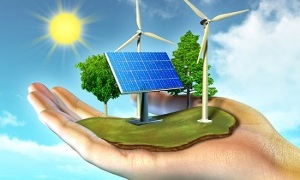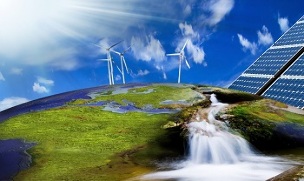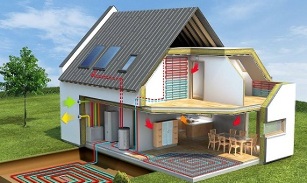
Today, in the modern world, energy saving is an integral part of the life of a civilized society. This is health, saving money and living comfort.
However, one of the most important (global) features of energy conservation is the protection of the environment from adverse effects.
Energy Conservation Concept
The term "energy saving" has long been used. Today, energy saving is characterized by a conceptual apparatus.
Energy saving is based on an energy source as an energy carrier that can be used in any activity. Energy saving is any activity aimed at reducing the use of energy sources without compromising their primary function. Despite the extreme accuracy of the definitions, confusion often occurs in the concepts of "energy saving" and "energy efficiency". In this regard, the definition of the latter is given. Energy efficiency is a specific feature that reflects the ratio of the use of energy sources to the cost of energy sources. Energy saving efficiency is characterized by, among other things, the energy efficiency class, which reflects the degree of utility of a product in terms of energy saving. Special energy studies are conducted to determine energy efficiency.
Basic principles of energy saving
Now, defining the basic concepts in this area, it is worth reflecting on the basic principles of energy saving:

- Use of alternative energy sources.
- Use of secondary energy sources.
- Application of energy-saving technologies and equipment.
- Take measures for the rational use of existing energy sources. Assess the economic feasibility of using any energy-saving technology and solution.
This list can be applied to both the principles of energy saving regulation and the basic approaches to the insulation of a particular house. The main thing we must not forget: energy saving includes not only additional ways to obtain energy, but also saving and efficient use of available energy.
Alternative energy sources
There is a lot of talk today about alternative energy sources. As a rule, we mean renewable energy sources. What is infinitely renewed on the planet Earth? Of course, it's water, sun, wind, crust. Of course, if you look at the details, the activity of the sun also changes over time, and the surface of the earth's crust becomes thinner, but all this is on the scale of the universe. We are talking about renewal within our civilization - I believe that in the coming centuries the Sun will not fade and the Earth will not fly out of its orbit.
Thus, today the following energy sources are considered alternatives to oil, gas, coal and wood:
- Solar energy.Solar panels and collectors are used to use such a source. The first are solar cells, which convert the sun's energy directly into electricity. Solar collectors do not convert energy into electricity, they heat the refrigerator for later use (for example, to heat water in a private house).
- Wind energy.Wind turbines that generate electricity using wind-powered blades are very popular in Europe. Germany, for example, already gets a third of its electricity from this renewable energy source.
- Energy of water.It's not just about hydropower. Today, there are heat pumps in a lake or pool that convert the heat of the water into a constant heating of the water to heat a house and provide hot water.
- Earth's energy.The heat pumps described above can also use groundwater or topsoil heat for utilities. Such devices are very popular because they do not require a water source or wind nearby: the refrigerator can be placed in special pipes under the lawn or in the wells in the garden area.
Secondary energy sources

Energy reuse is one of the basic principles of energy efficiency. Increasing the efficiency of the ventilation and air conditioning system used in the building is possible only by recycling the heat of the exhaust air. This process of returning some of the heat from the building (the air is heated in the room by the operating equipment, the people in the room) is called healing. In this sense, energy saving is the activity of conserving the energy available in the room.
The principle of operation of the recuperator is very simple - the air leaving the room through a certain platinum, which conducts heat well, heats the cold streams without interfering with the street. As a result, 2-3 degrees of warm air enters the house, not ice, which contributes to a more comfortable microclimate in the room and saves heat due to the increase in temperature in the room due to hot currents. Recuperators are plate-type, rotating (with a rotating element inside) and intermediate heat carriers, as shown above. A wide selection of recuperator manufacturers allows you to choose a device for different buildings and customers.
How to use communal energy sources rationally?
Rational use of existing sources includes not only the installation and operation of energy-efficient equipment, but also compliance with a certain regime. Energy saving mode is a lifestyle where energy saving is provided at home. If you have a goal - to save on utility costs, you must first install equipment that allows you to save kilowatts by automating supply and energy metering. It should be selected based on the signs confirming that the device or appliance provides energy savings. Increasing the energy optimization of resource use is possible only with the rational operation of all equipment. Turning off the lights on time in unoccupied rooms, paying attention to the waste of hot water and the correct installation of automatic measuring devices in the house and the consumption of heat and electricity, will allow you to achieve significant results in saving energy and personal money.
What is a passive house?

Energy efficiency and energy saving are inextricably linked with the concept of passive housing construction. Combines a number of energy saving measures that ensure low energy consumption. The history of passive home technology begins in Darmstadt, where it was first developed by physicist Feist. The calculation of the energy balance of the house gave him the idea to create a passive house - a building that will not need to be heated even in winter. At that time, houses in Germany consumed about 200 kWh / m² per year. A passive house, on the other hand, needs only 10 kWh / m² per year to live year-round and even stay comfortable. The main criterion for a passive house is the creation of a closed building envelope with increased thermal insulation and low thermal conductivity. This is achieved through the use of energy-saving thermal insulation materials, the removal of cold bridges (places in the building envelope where cold penetrates into the building: facade fasteners, window frames).
Evaluating the effectiveness of energy-saving technologies
In order to bring the level of energy consumption in a building closer to the standard of a passive house, it is necessary to use materials with high thermal resistance, modern engineering equipment, renewable and secondary energy sources, in short, energy saving measures. At the same time, energy efficiency is calculated based on the cost of a particular innovation in the home and the impact that such a decision will have on the owner. First, it is necessary to calculate the impact of new technology on the production and consumption of a particular type of resource. In this case, you should evaluate the following:
- Resource saving rate (the difference between energy efficient and sources used by traditional equipment during the calculation period when producing the same amount of energy).
- Effect of energy production (difference or ratio of energy volumes generated in a given period with comparable equipment options using the same amount of resources).
These indicators will give us an idea of the need to move to the calculation of the economic effect. When replacing a waste machine with a more modern one (over a period of time), the cost of purchasing new (and possibly old) equipment is calculated by comparing the cost of energy savings. This difference will have an effect on the owner after a certain period of time after the application of the energy-saving solution. In general, the installation of recuperators or solar panels pays for itself in 3-5 years.
As a result, it should be noted that energy saving is not just about saving money. First of all, he is interested in the future of our children.
























